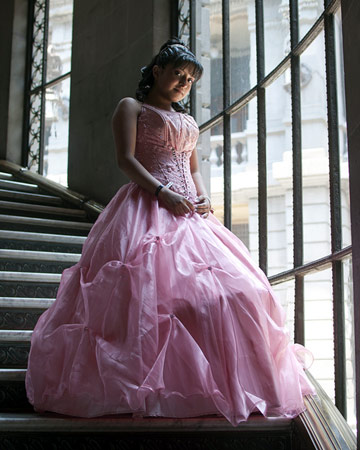Life Stages: Coming of Age
Children are closely supervised in Mexico until their adolescence, then are expected to be more self-reliant and take on vital responsibilities of the home. The confirmation ceremony, where a pre-teen recites the catechism professing their Catholic faith, is the rite of passage that marks the start of adolescence.
La Quinceañera
Mexican girls celebrate their “coming of age” in a quinceañera party on their 15th birthday. This symbolizes the girl’s transition to womanhood and readiness for courtship and marriage. Celebrations typically include a Thanksgiving Mass (Misa de Acción de Gracias), the decoration of the quinceañera (young girl) in colorful attire, and the participation of her parents, godparents, female cousins, and friends. A party follows with many guests, a lavish feast, music, dancing, and valuable gifts for the girl. The honored girl dances the traditional waltz with her father first and then continues dancing with her boyfriend or chambelan (male friend) and other party attendees.
Gender Differences
Coming of age also marks the beginning of discrimination between girls and boys in Mexican culture. Teenage girls are closely supervised by their families and are subject to restrictions like where they can go and with whom. Teenage boys are generally free to go anywhere and do anything, and begin to display macho attitudes in their activities.
Many poor Mexican youth start working to financially support their families at eight or nine years old (much earlier than the minimum legal age of 14 for non-hazardous jobs). Urban boys regularly engage in part-time labor alongside school, while rural boys give up their education entirely to work on the family farm. Surveys reveal that many poor young girls between the ages 12 to 15 are susceptible to trafficking, prostitution, and physical exploitation.
Copyright © 1993—2024 World Trade Press. All rights reserved.

 Mexico
Mexico 
